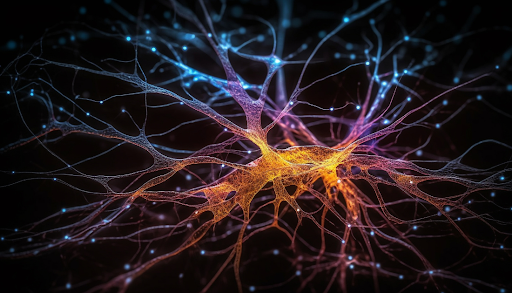

In a new study, neuroscience experts at The Ohio State University discovered a unique form of human white blood cell with the ability to regenerate nerve fibers.
The study’s findings, published in the journal Nature Immunology, represent a significant advancement in medical science.
“Dying nerve cells are typically not replaced, and damaged nerve fibers do not normally regrow, leading to permanent neurological disabilities,” said corresponding and senior author Benjamin Segal, MD, professor and chair of the department of neurology at The Ohio State University Wexner Medical Center and College of Medicine.
Segal’s team discovered that bone marrow cells can be converted into potent therapeutic agents. In the lab, the team was able to transform these cells into pro-regenerative cells that can aid damaged nerve cells survive and regrow.
“Our ultimate goal is to develop treatments using these special cells, to reverse damage in the optic nerve, brain, and spinal cord, thereby restoring lost neurological functions,” said Segal, who is also director of Ohio State’s Neuroscience Research Institute.
Nerve damage caused by spinal cord, optic nerve, or brain injuries, as well as degenerative neurological disorders like ALS, Alzheimer’s, and multiple sclerosis, was long thought to be irreversible. However, Segal’s research made a breakthrough in mice four years ago, giving hope to millions of people suffering from these disorders.
“Our new study shows that patients’ own cells can likely be used to deliver safe and effective treatments for these devastating conditions,” said co-first author Andrew Jerome, PhD, a member of Segal’s research team.
In a recent study, the researchers created pro-regenerative cells from the bone marrow of eight different human donors. Interestingly, cells from all eight donors successfully stimulated human nerve cells to rebuild nerve fibers. These cells also increased the survival rate of stressed nerve cells. This shows that they can reduce or stop the progression of degenerative neurological disorders, as well as reverse harm and restore function.
With the success of these lab experiments, our focus now shifts to bringing these new cell therapy treatments to the patients who need them. We believe these cells can be extracted from a patient, stimulated and grown to large numbers in the lab and reinfused at the site of injury or disease to regrow brain and spinal nerve fibers.”
Andrew Sas, MD, PhD, co-first author, assistant professor of neurology at Ohio State
Segal’s team is still pushing these breakthroughs ahead. The next step is to find the most efficient ways to generate and transport these cells so that clinical trials may commence. Segal stated that treatments that previously appeared unachievable for patients are now on the horizon.
For more information: Jerome, A. D., et al. (2024). Cytokine polarized, alternatively activated bone marrow neutrophils drive axon regeneration. Nature Immunology. doi.org/10.1038/s41590-024-01836-7.
more recommended stories
 Spatial Computing Explains How Brain Organizes Cognition
Spatial Computing Explains How Brain Organizes CognitionKey Takeaways (Quick Summary) MIT researchers.
 Gestational Diabetes Risk Identified by Blood Metabolites
Gestational Diabetes Risk Identified by Blood MetabolitesKey Takeaways (Quick Summary for Clinicians).
 Phage Therapy Study Reveals RNA-Based Infection Control
Phage Therapy Study Reveals RNA-Based Infection ControlKey Takeaways (Quick Summary) Researchers uncovered.
 Pelvic Floor Disorders: Treatable Yet Often Ignored
Pelvic Floor Disorders: Treatable Yet Often IgnoredKey Takeaways (Quick Summary) Pelvic floor.
 Urine-Based microRNA Aging Clock Predicts Biological Age
Urine-Based microRNA Aging Clock Predicts Biological AgeKey Takeaways (Quick Summary) Researchers developed.
 Circadian Control of Neutrophils in Myocardial Infarction
Circadian Control of Neutrophils in Myocardial InfarctionKey Takeaways for HCPs Neutrophil activity.
 E-Cigarette Use and Heart Attack Risk in Former Smokers
E-Cigarette Use and Heart Attack Risk in Former SmokersKey Takeaways for Clinicians and Nurses.
 High-Intensity Training and Oxidative Stress Insights
High-Intensity Training and Oxidative Stress InsightsNew Evidence Linking High-Intensity Training and.
 36-Week Pre-eclampsia Screening May Reduce Term Risk
36-Week Pre-eclampsia Screening May Reduce Term RiskA New Preventive Strategy for Term.
 Cardiovascular Risk and Sudden Cardiac Death in Diabetes
Cardiovascular Risk and Sudden Cardiac Death in DiabetesRising Sudden Cardiac Death (SCD) Risk.

Leave a Comment